Botrytis blight
July 6, 2015
Fungal leaf spots
Pathogen
Botrytis cinerea.
Hosts
Very large host range, some of the most susceptible include Delphinium, Hosta, Iris, Lilium, Primula, Rudbeckia and Viola. Blossoms are especially susceptible.
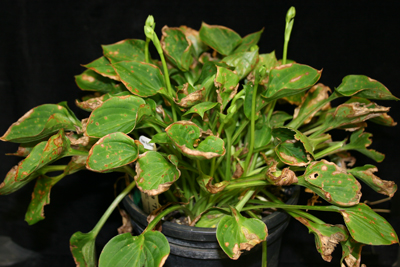
Severe leaf spotting. Infections developed during prolonged, wet weather
Symptoms
Seedling blight, leaf spots and blight, distortion of young leaves, crown rot and blossom blight.
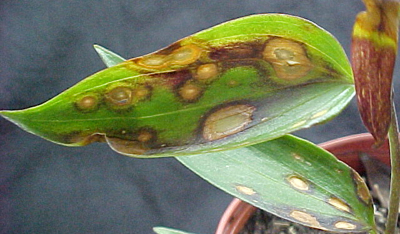
Severe leaf spotting on Lilium, a very susceptible host.
Signs
In high relative humidity, grayish, fuzzy mold on the surface of the affected tissue is visible with the naked eye.
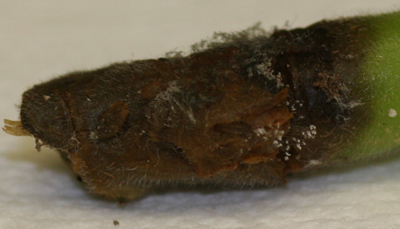
Basal ends of cuttings can be infected during propagation. The gray, fuzzy mold is characteristic of B. cinerea sporulation.
Spread
Spores are produced in mass under humid conditions and are readily released and moved by air currents. Additionally, overwintering structures (sclerotia) are formed and can persist in soil and plant debris. Sclerotia are found on the surface of heavily diseased plant material.
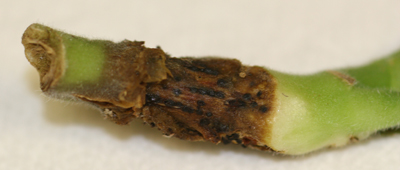
Sclerotia, the overwintering structure, on dead stem tissue.
Management
Sanitation and aeration procedures that reduce humidity levels around plants and appropriate fungicide applications are recommended for disease control. Botrytis cinerea can sporulate on dead plant material; fallen leaves and petals should be carefully removed from production areas. Trash cans used for dead plant tissue should not be kept in production areas. Regular fungicide applications will likely be necessary to reduce losses on especially susceptible hosts grown in humid environments.
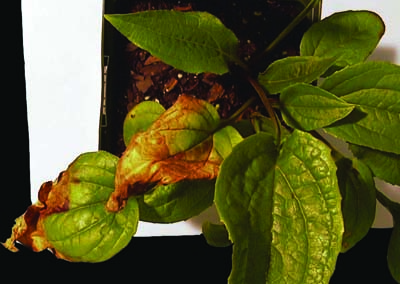
Foliar blighting of Rudbeckia.
Print a PDF of this page: Botrytis blight



 Print
Print Email
Email




